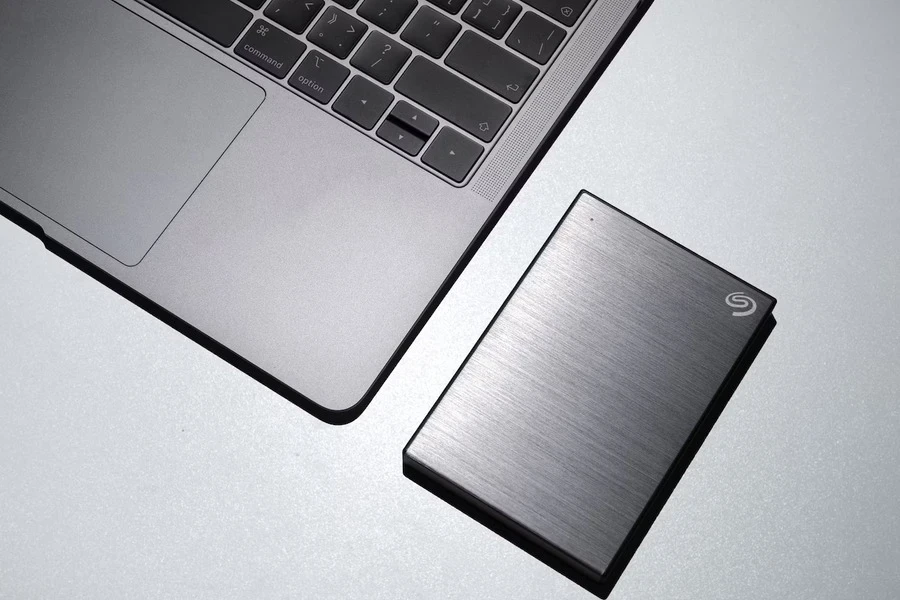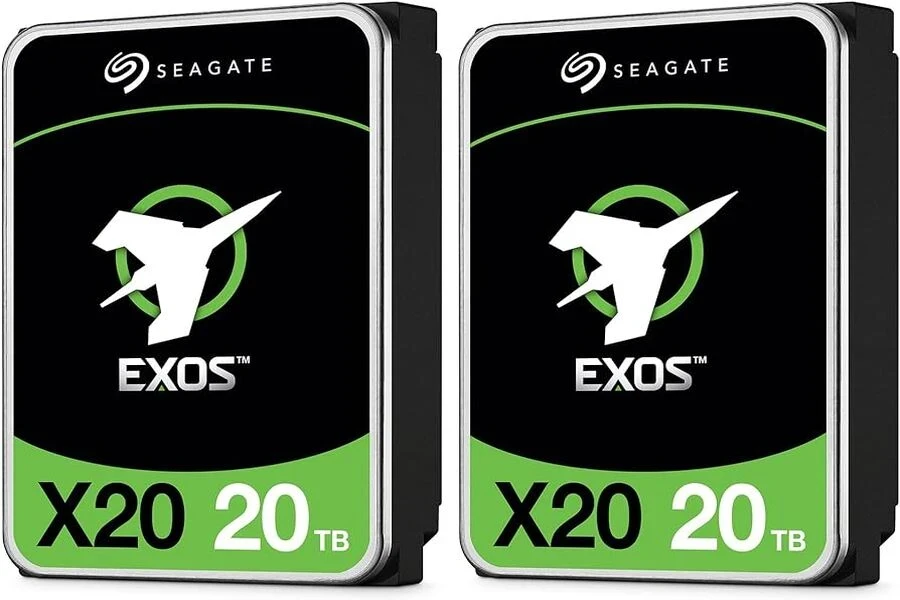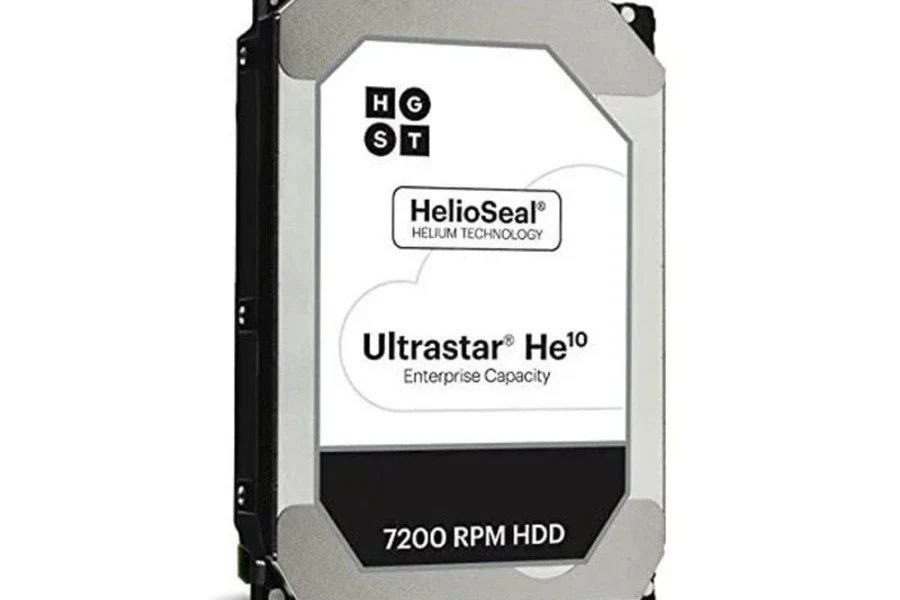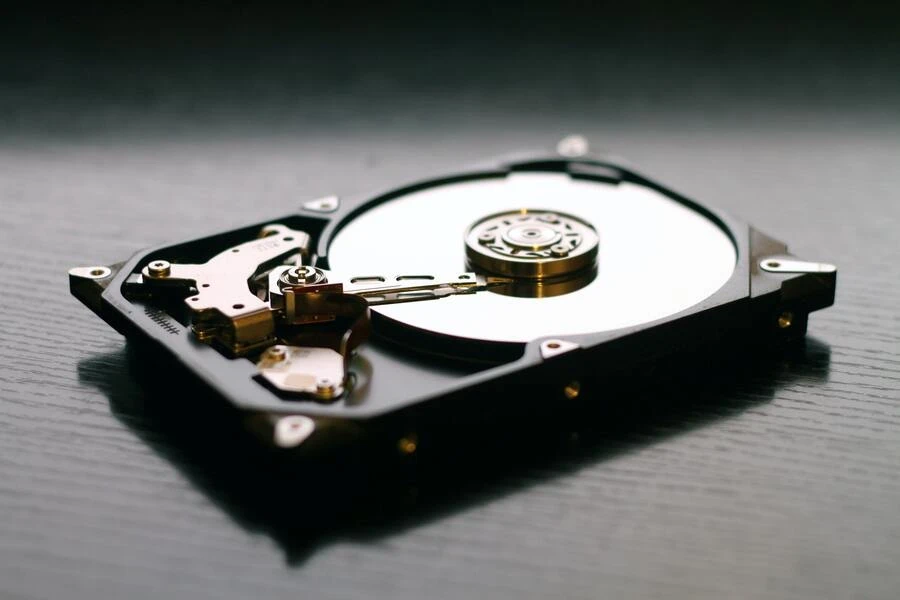Hard drives, or hard disk drives (HDDs), remain the dominant data storage solution despite projections that solid-state drives (SSDs) would soon replace them. Most enterprises and professionals still consider HDDs as a reliable non-volatile memory storage device, and. their ongoing prominence is evidenced in a recent report that states they account for about 55% of the data storage market. However, this technology is undergoing continuous improvements in order to meet the needs of rapidly growing data storage demands. This blog will explore the various HDD trends emerging in the market.
Table of Contents
Hard drive market overview
Hard drive top 2023 trends
Conclusion
Hard drive market overview

The global HDD market was valued at US $36.5 billion in 2022 and is estimated to generate US $40.88 billion in 2023. In addition, it is projected to grow at a CAGR of 12% between 2023-2033, for a total value of US $126.97 billion. Different regions have varying market growth rates, with North America and Europe leading global markets. Moreover, desktop HDDs are expected to see the highest growth at 12.3% CAGR within the 2023-2033 forecast period.
Multiple factors are driving global HDD market growth, including:
- Cost-effectiveness and high storage capacity compared to SSDs
- Increased demand in media and entertainment companies, which require affordable data storage solutions for their massive data needs, including high-definition videos, animation, and digital effects
- Demand in emerging markets, where cost considerations are paramount
- High demand in data centers that require high-capacity and cost-effective storage solutions
Hard drive top 2023 trends
Full disk encryption (FDE)

Full disk encryption (FDE), also known as whole disk encryption, has become a favored technology due to increased cases of data breaches and the need to safeguard sensitive data.
FDE involvesencrypting the entire hard drive’s contents, making data unreadable without a decryption key. It works by automatically converting the data on the hard drive into an unreadable format, that is, from plaintext to ciphertext. This improves protection against data breaches by preventing unauthorized access. Examples of FDE programs are BitLocker for Microsoft Windows and FileVault for MacOS.
Heat-assisted magnetic recording (HAMR) technology
Heat-assisted magnetic recording (HAMR) technology tackles the challenge of capacity limitations by using a laser diode to apply controlled heat to an HDD’s storage platters, optimizing the flipping of magnetic polarity during data writing. This innovation greatly enhances data storage efficiency, enabling a stable area density of 2 terabytes per square inch (2 Tbpsi). This allows for the manufacture of hard drives with capacities of 80TB or more, promising significant storage growth opportunities in the future.
Improved ransomware protection
Cyber attacks, particularly those involving ransomware, pose a major threat to the data storage and management industry. For instance, a 2022 report surveying 5,600 frontline IT professionals across 31 countries found that:
- 66% of the surveyed organizations had at some point been the victom of a ransomware attack
- More than 11% of the organizations had paid a ransom of US $1 million or more to their attackers
- The average cost of recovering from a ransom attack is US $1.4 million, while the average time it takes to recover from the damage and disruption is a month
It makes sense then that HDD manufacturers are strengthening their security features to heighten protection from ransomware attacks. An example of this action is the manufacture of self-encrypting hard drives that use a disk encryption key (DEK) set by the factory to encrypt and decrypt user data.
Increased HDD capacity

The development and implementation of technologies that enable hard drives to store larger amounts of data within the same physical space is never-ending. Two of the latest innovations in magnetic recording technologies, for example, shingled magnetic recording (SMR) and heat-assisted magnetic recording (HAMR), enable manufacturers to pack more data into smaller areas. The result is the launching of high-capacity HDDs by multiple brands. For instance, Western Digital launched their updated WB My Book 22TB and WD My Book Duo 44TB, while Seagate is set to launch a 30+TB HAMR HDD, with additional plans to produce 50TB HDDs by 2026.
Hard drives with multiple platters stacked within a single drive enclosure, therefore maximizing capacity, are becoming more common. In this case, manufacturers are utilizing vertical space and advanced data compression algorithms to increase data storage capacities without increasing the drive’s footprint.
Helium hard drives

Helium-filled storage solutions are making modern HDDs more competitive and aiding their increased popularity worldwide. For instance, The Manufacturer predicts that demand for HDDs will increase by a CAGR of 10%, with helium HDDs gaining prominence over air-filled HDDs. These devices have lower air resistance, allowing manufacturers to fit more platters into the same space. In addition, helium reduces friction when the disk rotates, thus mitigating turbulence issues. It also helps minimize disk platter thickness, increasing storage capacity.
An example of a helium-filled drive is the Toshiba’s MG10 series 10 platter HDDs, which have 3.5-inch factor form and up to 20TB capacity, as well as the WD’s HelioSeal hard drives. Helium-filled hard drives offer greater capacity, efficiency, reliability, and performance.
Cloud integration
Manufacturers are designing hard drives with cloud integration to facilitate seamless data backup, synchronization, and access across devices and locations. Seagate projects that HDDs, especially those intended for cloud and hyperscale applications, will dominate data centers for the next 10 years. A report by TAdviser indicates that 90% of data stored in cloud data centers is stored on hard drives, while only 10% is stored on SSDs. This is because HDDs have the lowest cost per terabyte and the optimal ratio of price, total costs, power consumption, performance, reliability, and durability.
Improved energy efficiency

Energy efficiency is a major consideration among modern-day consumers looking to purchase HDDs. For instance, Google Ads shows “HDD power consumption” and “HDD power usage” to be the most searched phrases as compared to other related keywords. This need for data storage with reduced power consumption means that hard drive manufacturers are constantly focusing on new ways to improve their products’ energy efficiency t. This development also aligns with eco-friendly practices, contributing to reduced carbon emissions and energy consumption. For example, Seagate’s PowerTrim™ and PowerChoice technologies are currently used in manufacturing energy-efficient enterprise-class hard drives.
Conclusion
HDDs will continue to dominate the data storage market due to their high capacity and low costs. Ongoing developments, such as integrating advanced security features, SMR and HAMR technologies, helium-filled storage solutions, cloud integration, and energy efficiency, will continue to increase their competitiveness. Based on projected HDD market growth, businesses prioritizing these advanced storage devices will continue to stand out in the competitive global markets.If you’re on the market for such devices, look no further than the huge range available on Alibaba.com.




